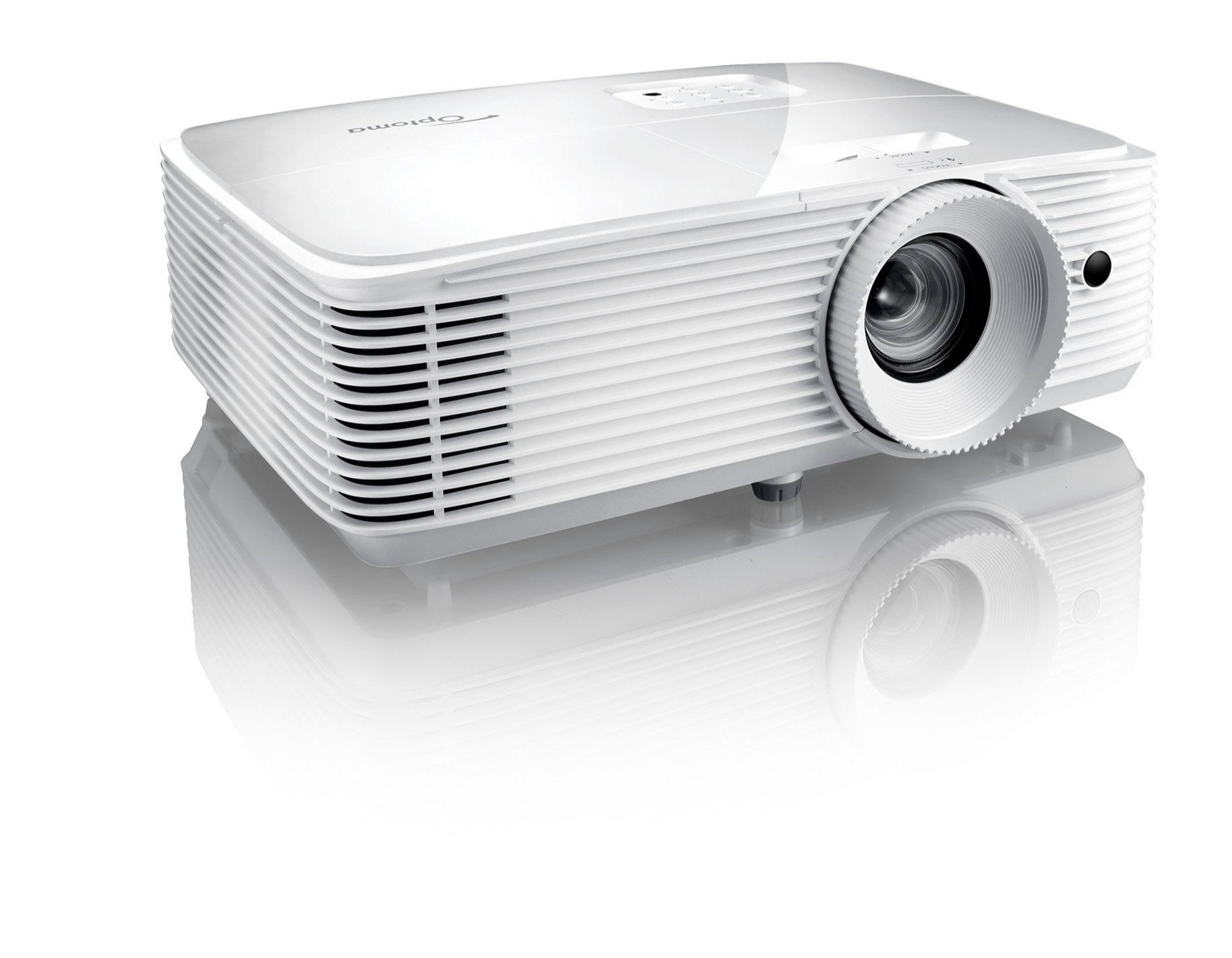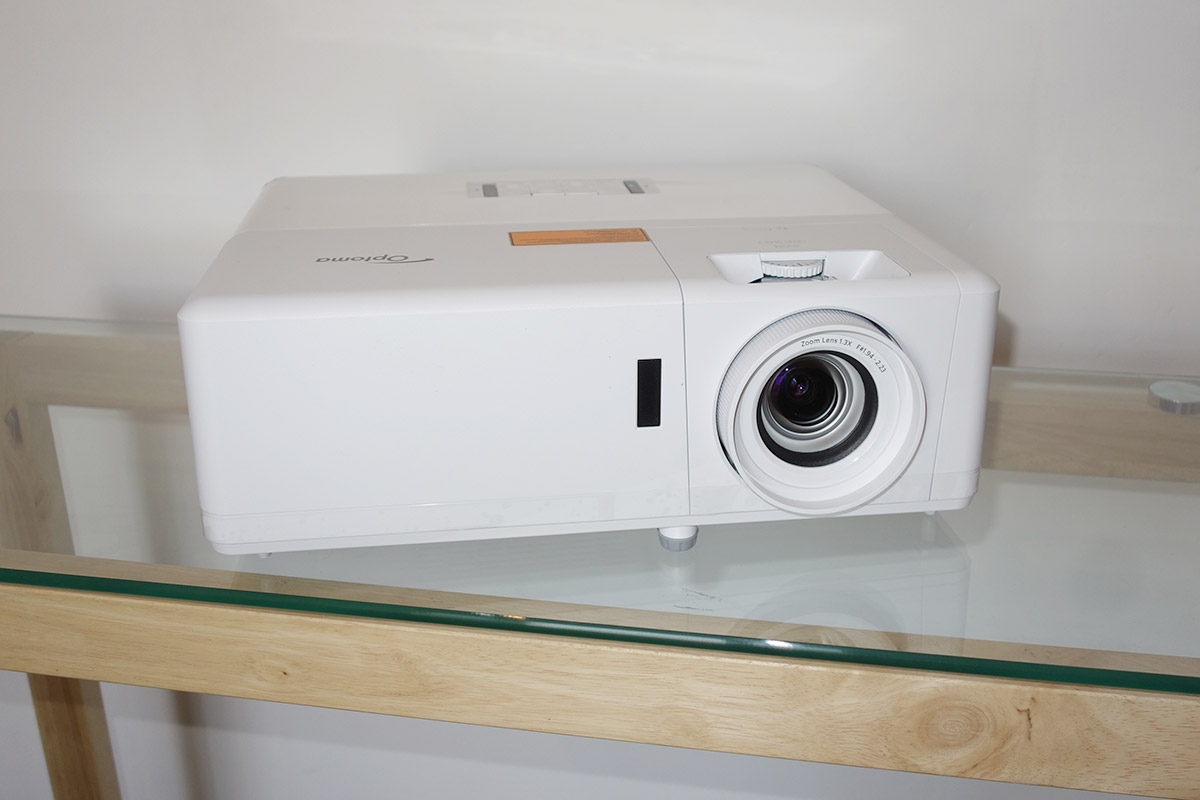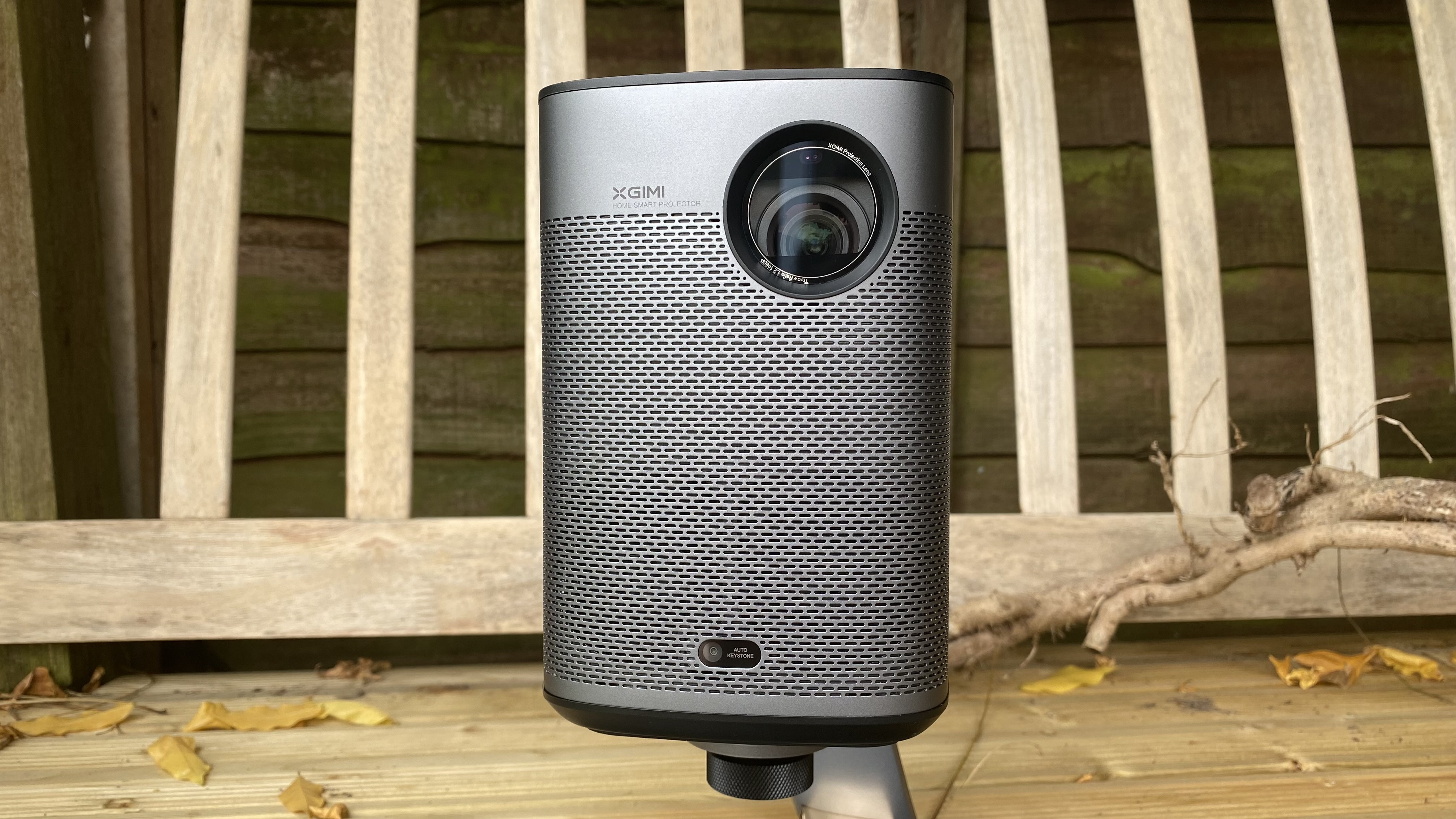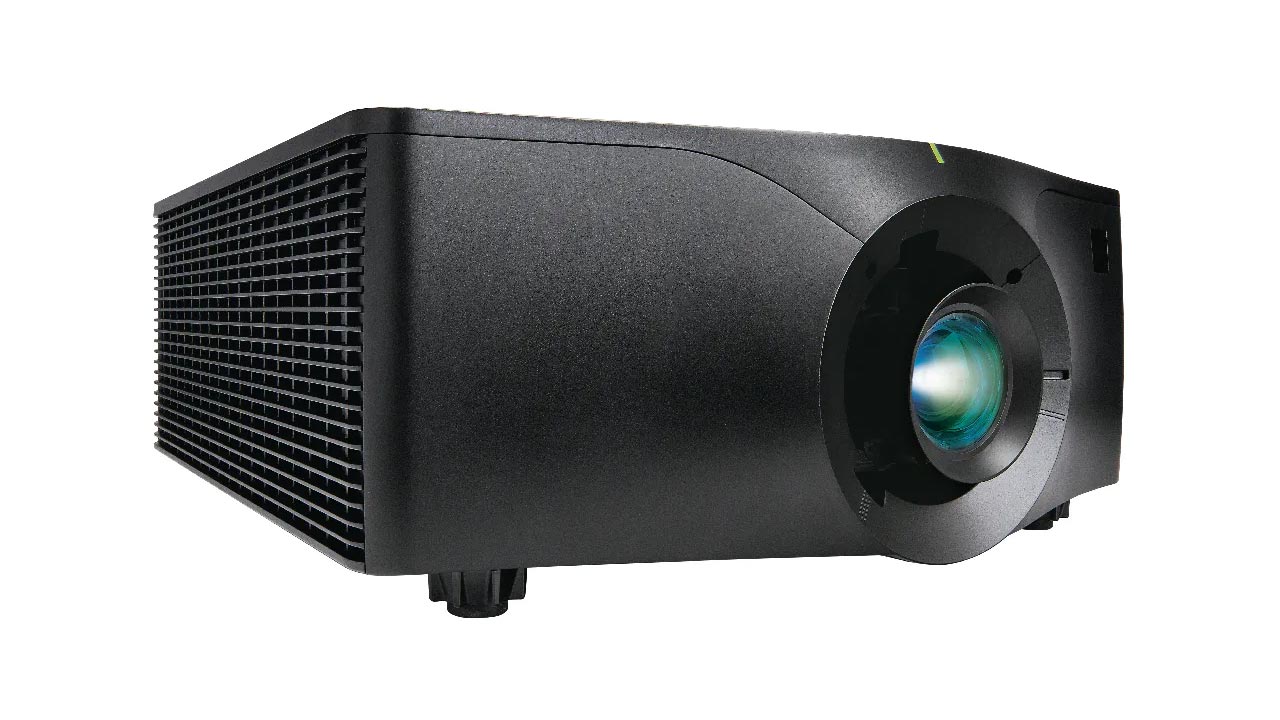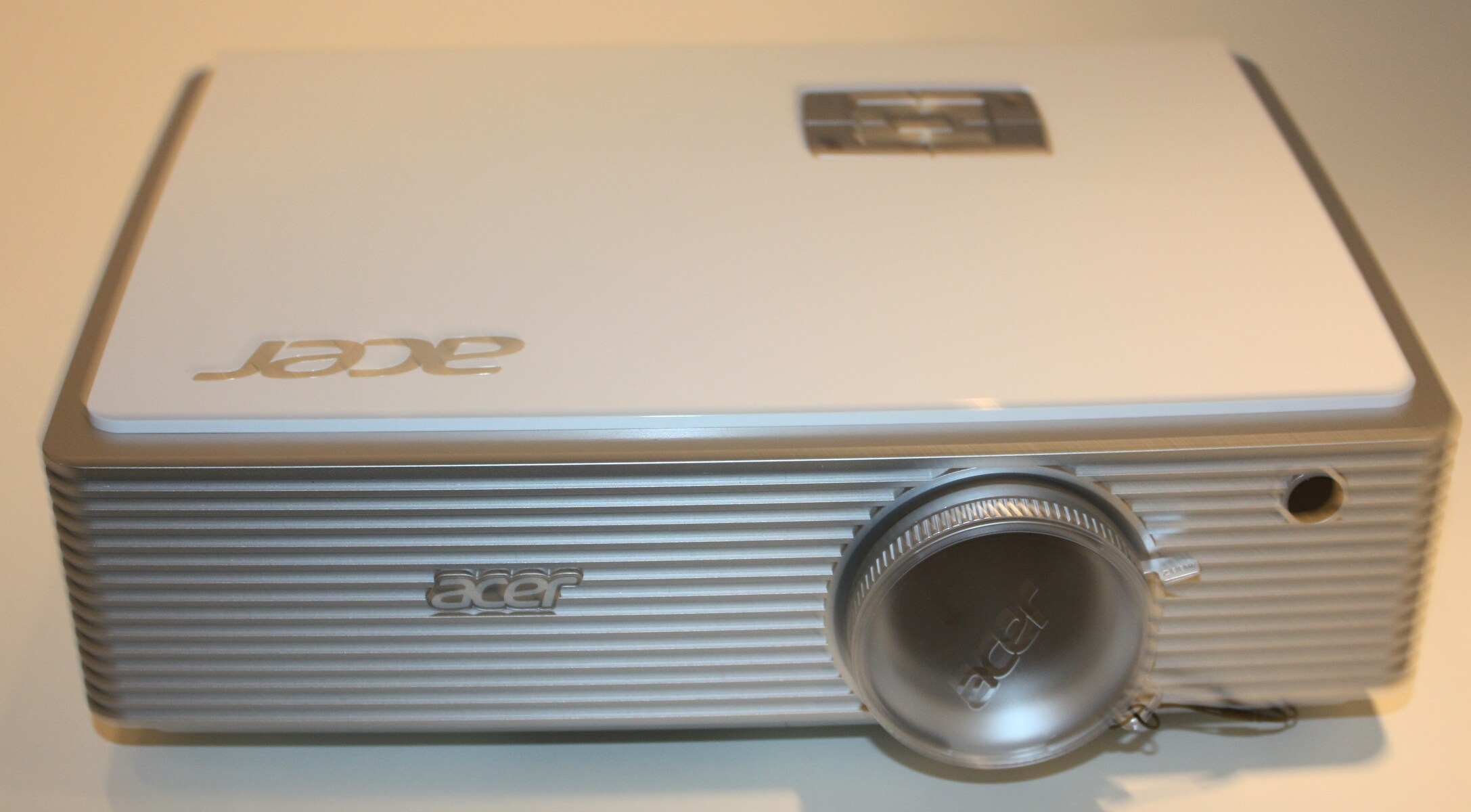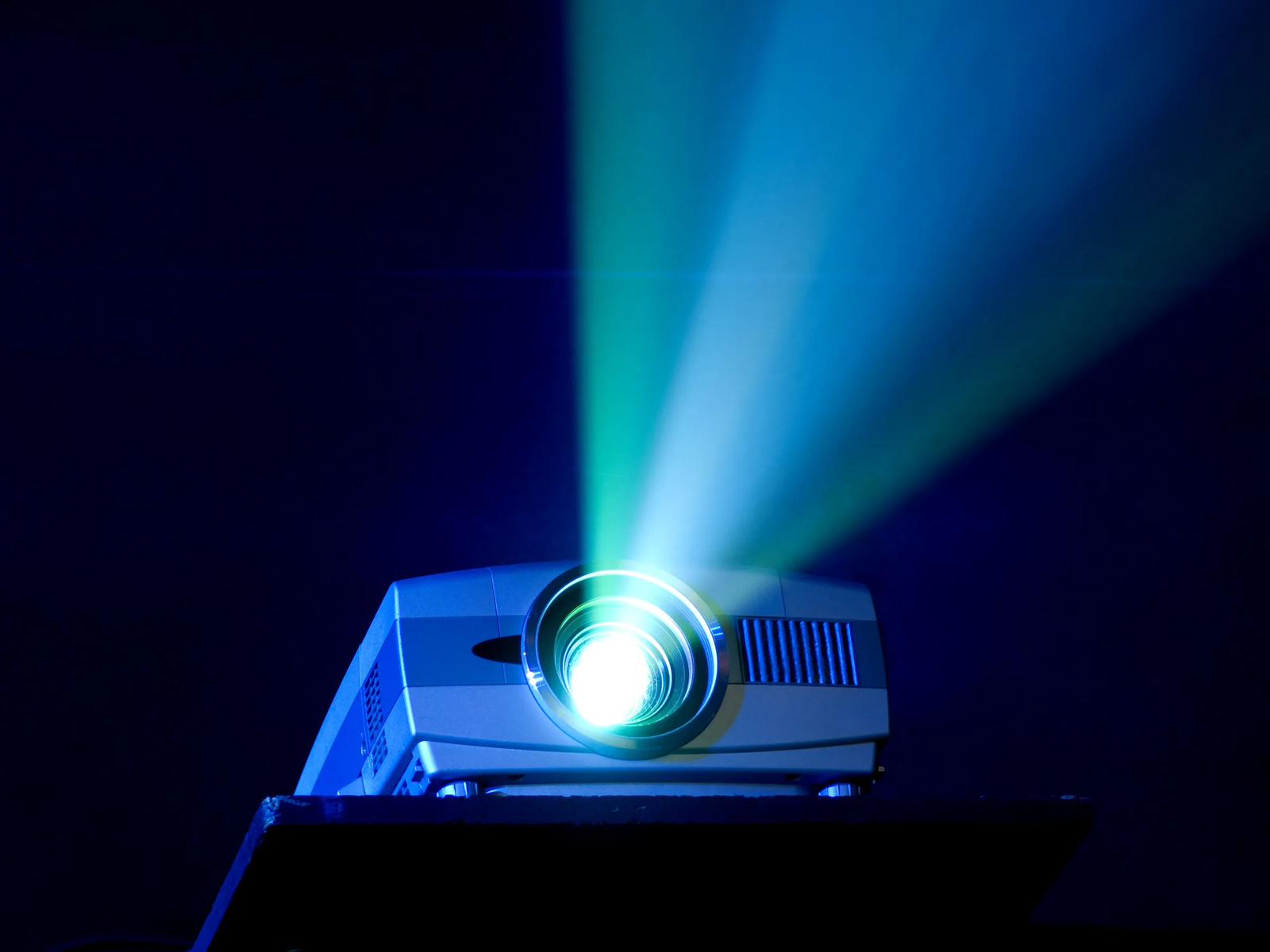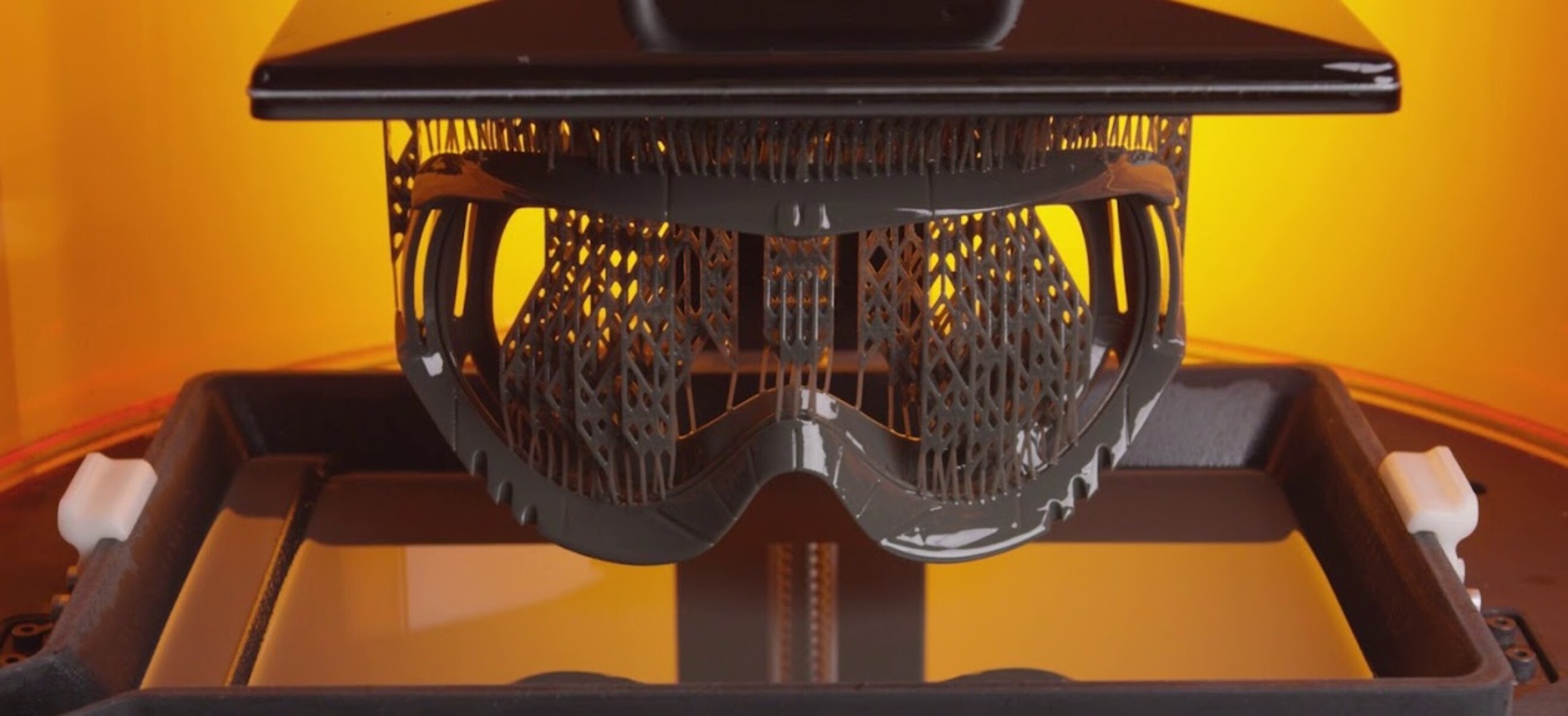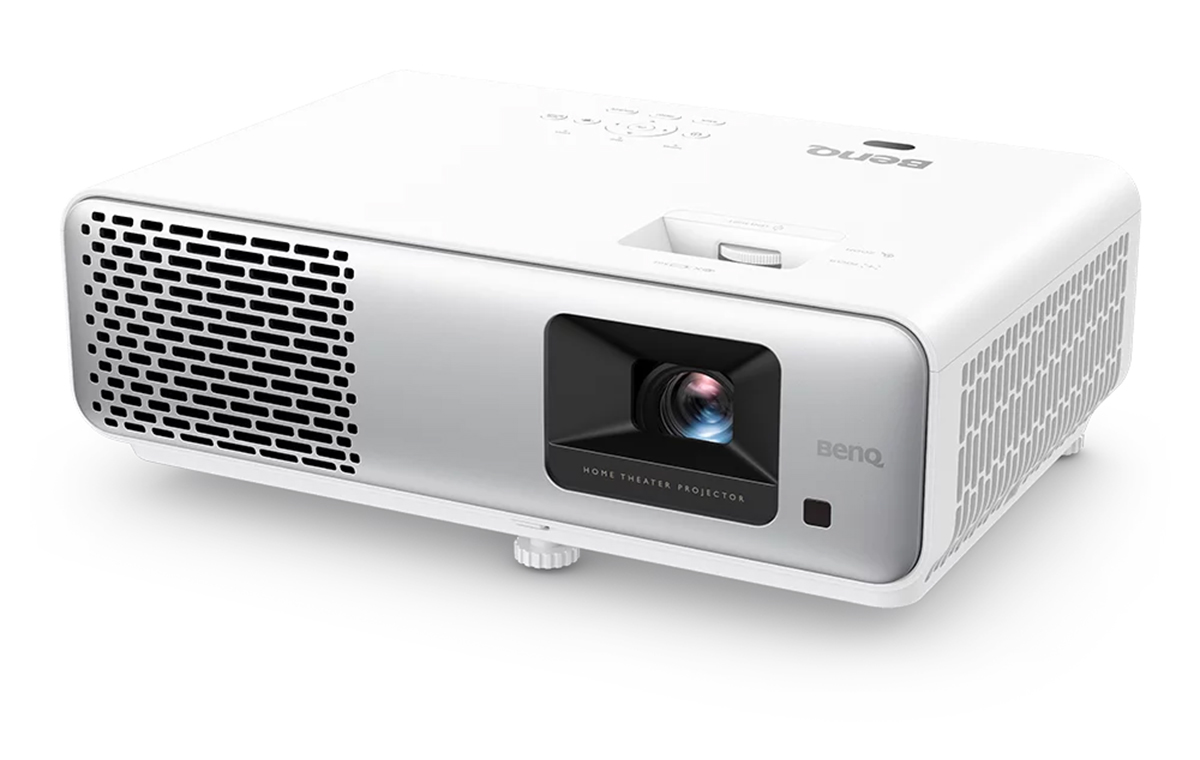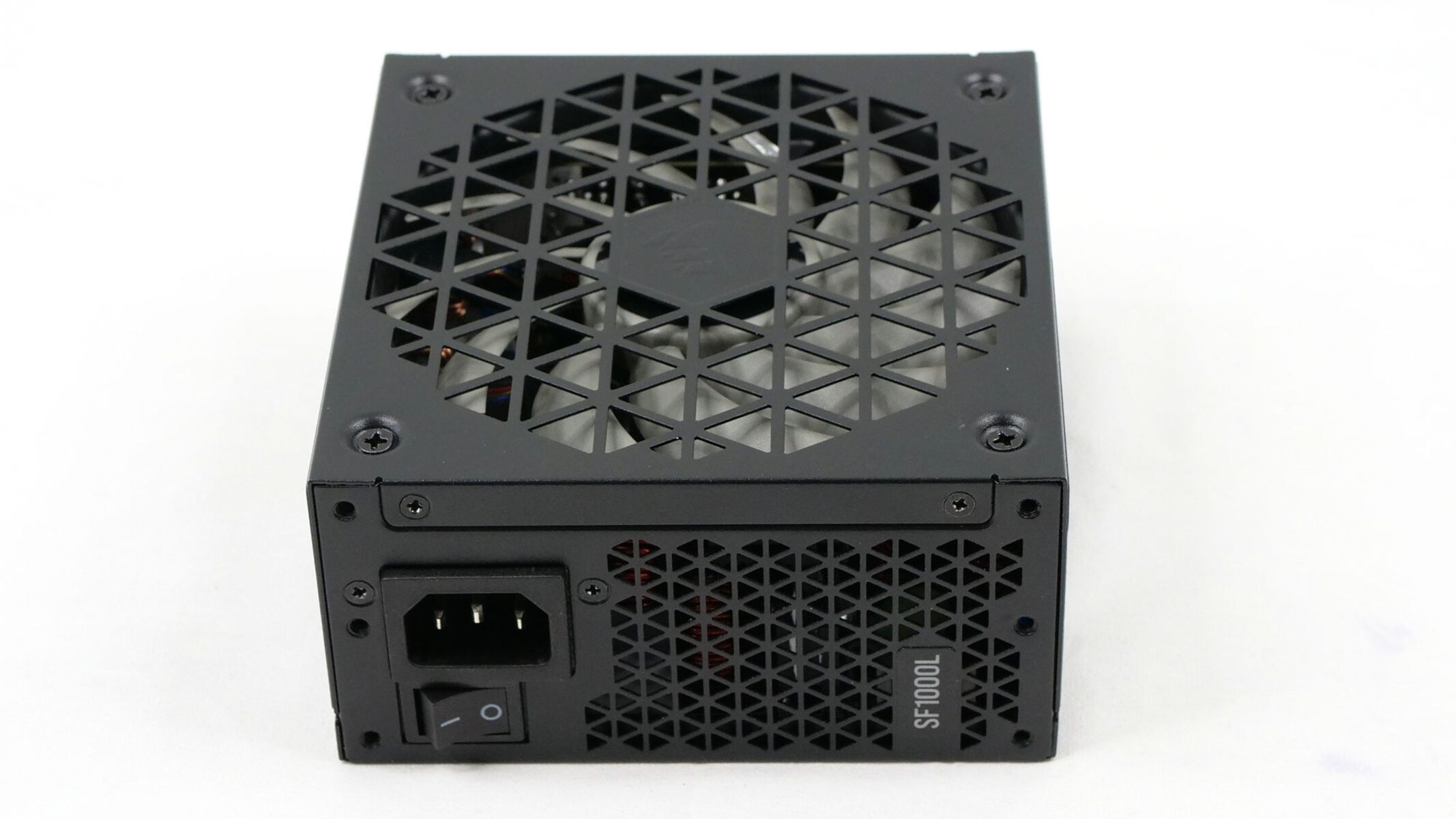Introduction
A DLP projector is a popular choice for individuals and businesses looking to display high-quality images and videos in a variety of settings. The acronym “DLP” stands for Digital Light Processing, which refers to the technology used in these projectors. With its innovative design and advanced features, a DLP projector offers a compelling solution for presentations, home theaters, classrooms, and more.
DLP projectors work by utilizing a unique combination of mirrors, microchips, and light sources to project images onto a screen or surface. This technology allows for the creation of sharp, vibrant visuals with excellent color accuracy and contrast.
In this article, we will explore how DLP projectors work, the components that make up these devices, and the advantages and disadvantages they offer. We will also provide insights into important factors to consider when choosing a DLP projector that best suits your needs.
Whether you are a tech enthusiast, a business professional, or a movie lover, understanding the inner workings of a DLP projector can enhance your appreciation for this versatile piece of technology. So, let’s dive deeper into the world of DLP projectors and discover what makes them so popular and effective.
What is a DLP Projector?
A DLP projector is a type of projector that utilizes Digital Light Processing technology to display images and videos onto a screen or surface. DLP stands for Digital Light Processing, which refers to the technology developed by Texas Instruments in the late 1980s. This innovative technology has revolutionized the way we project images, offering superior image quality and performance compared to traditional projector technologies.
At the heart of a DLP projector is a DMD (Digital Micromirror Device) chip. This chip consists of thousands of micro mirrors, each capable of tilting independently to reflect light. These micro mirrors are responsible for creating the pixels that make up the resulting image. The DMD chip works in conjunction with a light source, typically a high-intensity lamp or LED, to deliver bright and vibrant visuals.
Unlike LCD (Liquid Crystal Display) projectors, DLP projectors use mirrors to manipulate light instead of pixels. This allows for faster response times, higher contrast ratios, and more accurate color reproduction. The mirrors on the DMD chip tilt at incredibly high speeds, effectively creating a grayscale image. To display a full-color image, these mirrors rapidly switch between red, green, and blue light to generate the desired colors.
One of the notable advantages of DLP projectors is their ability to handle fast-motion content without significant image degradation or motion blur. This makes them an ideal choice for watching action-packed movies or sports events where a smooth and crisp image is essential.
In addition to their remarkable performance, DLP projectors also offer flexibility in terms of installation options. They come in various sizes and form factors, ranging from portable mini projectors to large-scale installation projectors used in auditoriums and cinemas. This adaptability allows users to choose a projector that best fits their needs and requirements.
Overall, DLP projectors are renowned for their exceptional image quality, fast response times, and versatility. They have become a popular choice for businesses, educational institutions, home theaters, and entertainment venues due to their ability to deliver stunning visuals and immersive viewing experiences.
How does a DLP Projector work?
A DLP (Digital Light Processing) projector operates by utilizing an array of tiny mirrors, a color wheel, and a light source to project images onto a screen or surface. The process involves several steps that work together to create a seamless and vibrant visual display.
1. Light Source: The first step in the projection process is to generate a bright light source. This can be achieved using a traditional lamp or an LED (Light-Emitting Diode). The light source provides the necessary illumination for the projection.
2. Digital Micromirror Device (DMD) Chip: The heart of a DLP projector is the DMD chip. The chip consists of thousands or even millions of micro mirrors, each corresponding to a single pixel. These mirrors can tilt rapidly in two directions, either towards the light source (ON state) or away from it (OFF state).
3. Color Wheel: In order to produce full-color images, a color wheel is used in conjunction with the DMD chip. The color wheel contains red, green, and blue filters that rotate in front of the light source. As the filters pass through the light beam, the individual mirrors on the DMD chip selectively reflect the colored light to create the desired hues.
4. Binary Code: The DMD chip interprets the input signal and converts the digital information into a binary code. Each mirror on the chip corresponds to a specific binary value, which determines whether the mirror reflects light or not. By rapidly switching between the ON and OFF states, the DMD chip generates grayscale images.
5. Rapid Mirror Reflection: To produce a full-color image, the mirrors on the DMD chip rapidly toggle between the red, green, and blue light as they reflect off the color wheel. This quickly alternating reflection allows each pixel to create the right combination of colors for the desired image.
6. Projection Lens: Once the mirrors on the DMD chip have reflected the appropriate light, the light is directed through a projection lens. The lens focuses the light and enlarges it, projecting it onto a screen or surface, creating a clear and crisp image.
7. Image Quality: The fast response time of the DMD chip, combined with the precise control of the mirrors and the color wheel, results in high-quality images with excellent color accuracy and contrast. DLP projectors are known for their ability to render fast-motion content smoothly, without motion blur or image degradation.
In summary, a DLP projector uses micro mirrors, a color wheel, and a light source to produce vibrant and detailed images. This intricate process enables DLP projectors to deliver exceptional image quality and performance, making them a popular choice for various applications, including presentations, home theater systems, and professional installations.
Components of a DLP Projector
A DLP (Digital Light Processing) projector comprises several key components that work together to create a seamless and immersive projection experience. Understanding these components can help users make informed decisions when selecting a DLP projector that meets their specific needs and requirements.
1. Light Source: The light source is a crucial component of a DLP projector. It provides the illumination necessary to project the image onto the screen or surface. Traditional DLP projectors use high-intensity lamps, while newer models may utilize LED (Light-Emitting Diode) technology. The choice of light source affects factors such as brightness, color accuracy, and overall lifespan of the projector.
2. Digital Micromirror Device (DMD) Chip: The DMD chip is the heart of a DLP projector. It is the position and movement of the tiny mirrors on this chip that determine the pixels and reflect the light. Each mirror on the chip represents a single pixel, and the rapid switching of these mirrors allows the DLP projector to create high-resolution images with precise detail and color accuracy.
3. Color Wheel: The color wheel is an essential component in DLP projectors that utilizes single-chip technology. It consists of a spinning wheel with red, green, and blue filters. As the color wheel rotates, it synchronizes with the mirrors on the DMD chip, allowing each pixel to reflect the appropriate primary colors at the right time. This combination of colors gives rise to a full-color image on the screen.
4. Projection Lens: The projection lens plays a vital role in projecting the light generated by the DMD chip and color wheel onto the desired surface. It focuses and magnifies the light, allowing for a clear and sharp image to be displayed. The quality and versatility of the projection lens greatly impact the overall viewing experience.
5. Cooling System: DLP projectors generate heat, especially when the lamp or LED is in use. A built-in cooling system, usually comprising fans and heat sinks, is responsible for dissipating this heat and preventing the projector from overheating. Proper cooling ensures that the projector operates efficiently and extends its lifespan.
6. Connectivity Options: DLP projectors often come equipped with a variety of connectivity options, allowing users to connect their devices and media sources effortlessly. Common connectivity options include HDMI, VGA, USB, and audio ports. These connections enable users to project content from laptops, Blu-ray players, gaming consoles, and other compatible devices.
7. Control Panel and Remote Control: DLP projectors are typically equipped with a control panel consisting of buttons or touch controls that allow users to navigate and adjust projector settings. Additionally, a remote control provides convenience by allowing users to operate the projector from a distance, making it easier to switch inputs, adjust volume, and control other functions.
8. Mounting Options: Depending on the intended use and the location of the projection, DLP projectors offer various mounting options. Ceiling mounts, wall mounts, and portable stands are commonly used to position and secure the projector correctly for optimal viewing angles.
Understanding the components of a DLP projector is essential in selecting the right projector to suit your needs. Each component plays a critical role in ensuring the performance, image quality, and overall functionality of the projector, making it a worthwhile investment for presentations, entertainment, and other applications.
DLP Technology Explained
DLP (Digital Light Processing) technology is a projection technology developed by Texas Instruments. It uses microscopic mirrors known as the Digital Micromirror Device (DMD) to create crisp, high-quality images and videos on a screen or surface. This advanced technology offers several advantages that make it a popular choice for projectors across various industries and applications.
The DMD chip in a DLP projector consists of thousands or even millions of tiny mirrors, each representing a single pixel. These mirrors are mounted on hinges and can tilt rapidly either towards or away from the light source. By reflecting light away, a mirror creates a dark pixel, and by reflecting light towards the lens, it creates a bright pixel.
One of the key benefits of DLP technology is its ability to produce high contrast ratios, resulting in vivid and lifelike images. Since each pixel can individually tilt to create light or dark areas, DLP projectors can achieve a high level of contrast, enhancing overall image quality. This is especially advantageous when projecting scenes with deep blacks and bright whites, as it creates a more immersive viewing experience.
Another notable advantage of DLP technology is its fast response time. The mirrors on the DMD chip can tilt at exceptionally high speeds, allowing for smooth and seamless motion in videos or fast-paced content. This reduces motion blur and provides crisp and clear images, making DLP projectors ideal for gaming, sports events, and action movies.
The use of a color wheel in combination with the DMD chip enables DLP projectors to produce full-color images. The color wheel consists of red, green, and blue filters that rotate in front of the light source. As the filters pass through the light beam, the mirrors on the DMD chip selectively reflect the colored light, creating the desired hues and producing accurate and vibrant colors on the screen.
DLP projectors also offer excellent reliability and longevity. Since DLP projectors have fewer moving parts compared to LCD projectors, they are less prone to wear and tear, resulting in minimal maintenance requirements. Additionally, the sealed nature of the DMD chip protects it from dust particles, ensuring consistent image quality over an extended period of time.
One important consideration with DLP technology is the potential for the “rainbow effect.” This occurs when some viewers perceive brief flashes of color, particularly when shifting their gaze quickly across the projected image. However, modern DLP projectors have incorporated techniques like faster color wheels and improved algorithms to minimize this effect.
In summary, DLP technology revolutionized the projection industry by offering superior image quality, fast response times, and vibrant colors. With its advanced features and reliability, DLP projectors have become a popular choice for business presentations, home theaters, educational institutions, and various other applications where image clarity and performance are paramount.
Advantages of DLP Projectors
DLP (Digital Light Processing) projectors offer several advantages that make them a preferred choice for a wide range of applications. Whether it’s for business presentations, home theaters, or educational settings, here are some key benefits of using DLP projectors:
1. Image Quality: DLP projectors produce sharp, crisp, and vibrant images with high contrast ratios. The ability to individually control each micro mirror on the DMD chip allows for excellent black levels and bright whites, resulting in superior image quality and enhanced visual performance.
2. Fast Response Time: With their rapid micro mirror movement, DLP projectors can display fast-moving content without motion blur. This makes them ideal for action-packed movies, gaming, and sports events where quick and precise image rendering is crucial.
3. High Brightness: DLP projectors often offer high brightness levels, making them suitable for use in venues with ambient light, such as well-lit conference rooms or classrooms. This ensures that projected images are clear and visible, even in challenging lighting conditions.
4. Color Accuracy: DLP projectors deliver accurate and vibrant colors, thanks to the utilization of a color wheel that filters the light source into the primary colors (red, green, and blue). This results in lifelike color reproduction and a more immersive viewing experience.
5. Long Lasting: DLP projectors are known for their longevity and minimal maintenance requirements. The DMD chip used in DLP projectors is highly durable, with a sealed structure that protects it from dust, ensuring consistent image quality over an extended period of time.
6. Compact and Portable: Many DLP projectors are designed to be compact and lightweight, making them easily portable. This is especially beneficial for mobile presenters, businesses on the go, or individuals who want to enjoy a home theater experience in different rooms.
7. Wide Range of Options: The market offers a wide range of DLP projectors with varying features, resolutions, and specifications to suit different needs and budgets. Whether you require a basic entry-level model or a high-end professional-grade projector, there are options available to meet your specific requirements.
8. 3D Capabilities: Many DLP projectors support 3D content, allowing users to enjoy an immersive three-dimensional experience. This feature is particularly popular in home theaters and entertainment venues, providing a more engaging and realistic viewing experience.
9. Quiet Operation: DLP projectors often operate quietly due to their advanced cooling systems and efficient use of energy. This is particularly important for presentations, home theaters, and classrooms, where a silent and distraction-free environment is desired.
Overall, DLP projectors offer numerous advantages, including exceptional image quality, fast response times, accurate colors, versatility, and portability. These features make DLP projectors a preferred choice for various applications, ensuring an immersive and engaging visual experience.
Disadvantages of DLP Projectors
While DLP (Digital Light Processing) projectors come with numerous advantages, it is important to consider their limitations before making a purchasing decision. Here are some potential disadvantages associated with DLP projectors:
1. Rainbow Effect: Some viewers may experience the “rainbow effect” when watching a DLP projector. This occurs as a brief flash of colors, particularly when shifting their gaze quickly across the projected image. While not everyone notices this effect, it can be distracting for some individuals.
2. Limited Viewing Angles: DLP projectors can have limitations when it comes to viewing angles. The quality of the displayed image may diminish when viewed from extreme side angles, resulting in reduced color accuracy and contrast. Users may need to position themselves within a certain range to ensure optimal image quality.
3. Potential for DLP Chip Failure: DMD chips in DLP projectors have a limited lifespan, and in rare cases, they can experience failures. This can manifest as dead pixels or pixelation in the projected image. Although these instances are uncommon, they can be costly to repair or replace if they occur outside the warranty period.
4. Heat Generation and Noise: DLP projectors can generate a significant amount of heat, particularly in models that use traditional lamps. Adequate cooling systems, such as fans and heat sinks, are employed to dissipate the heat. However, this can result in increased noise levels from the cooling mechanisms, which may be distracting in quiet environments.
5. Limited Pixel Shift Technology: DLP projectors traditionally struggled with the rendering of true 4K resolution due to the size and arrangement of the micro mirrors on the DMD chip. While newer models with advanced pixel shift technology can mimic 4K resolution, the image quality may not be on par with native 4K projectors, especially when scrutinized at close distances.
6. Potential for “Screen Door” Effect: In some cases, DLP projectors may exhibit a “screen door” effect, where viewers perceive a fine grid or pattern resembling a screen door on the projected image. This can happen when the pixel structure of the DMD chip becomes noticeable, particularly when viewing content at close distances.
7. Smaller Color Gamut: Compared to other projection technologies, DLP projectors may have a slightly smaller color gamut. While advancements have been made to expand the color range, some competitors, such as high-end LCD projectors, may offer a wider color space, resulting in more accurate and vibrant color reproduction.
8. Cost: Depending on the specific features and specifications, DLP projectors can be relatively more expensive compared to other projection technologies. Higher-end models with advanced features, such as higher resolutions or laser light sources, can significantly increase the cost of the projector.
Despite these potential drawbacks, DLP projectors remain a popular choice in many applications due to their exceptional image quality, fast response times, and reliability. It is important to carefully evaluate these limitations against your specific needs and preferences before investing in a DLP projector.
Factors to Consider When Choosing a DLP Projector
When selecting a DLP (Digital Light Processing) projector, it is important to consider various factors that will ensure the projector meets your specific needs and requirements. Here are some key considerations to keep in mind:
1. Resolution: The resolution of the DLP projector determines the level of detail and clarity in the projected image. Common resolutions include HD (1280×720 pixels), Full HD (1920×1080 pixels), and 4K Ultra HD (3840×2160 pixels). Choose a resolution that suits the content you will be projecting and the available budget.
2. Brightness: The brightness of a DLP projector is measured in lumens. Consider the lighting conditions of the environment where the projector will be used. For dimly lit rooms or home theaters, a projector with lower brightness may suffice, while brightly lit rooms or outdoor settings may require a higher lumen output for a clearer and more visible image.
3. Throw Distance: The throw distance refers to the distance between the projector and the screen or surface on which the image will be displayed. Consider the size of the room and the desired screen size to determine the appropriate throw ratio for the projector. Short-throw or ultra-short-throw projectors are ideal for smaller spaces or when a large image is desired in close proximity.
4. Connectivity Options: The projector should have the necessary connectivity options to accommodate your desired setup. Common connections include HDMI, VGA, USB, and audio ports. Determine which devices you intend to connect to the projector and ensure compatibility with the available ports.
5. Keystone Correction: Keystone correction helps adjust the projected image to appear rectangle-shaped when projected at an angle. Look for a projector with adjustable keystone correction if you anticipate the need to mount the projector at an angle or project onto uneven surfaces.
6. Contrast Ratio: The contrast ratio determines the difference between the darkest and brightest parts of the image. Higher contrast ratios produce more vibrant and detailed images. Consider the desired level of image depth and detail when evaluating the contrast ratio of the projector.
7. Noise Level: Pay attention to the noise level of the projector, especially if you plan to use it in a quiet environment. Projectors with advanced cooling systems or quieter fans can minimize distracting noise during presentations or while enjoying movies and videos.
8. Budget: Set a budget for your projector purchase and consider the features that are most important to you. While more advanced features may offer enhanced performance, they can also significantly increase the price. Determine your priorities and find a balance between the desired features and your allocated budget.
9. Brand and Warranty: Consider reputable brands that offer reliable products and good customer support. It is also essential to check the warranty provided with the projector to ensure you have proper coverage and support in the event of any issues or defects.
By carefully considering these factors, you can select a DLP projector that meets your specific requirements, providing an optimal viewing experience and ensuring value for your investment.
Conclusion
Choosing the right DLP (Digital Light Processing) projector is essential to ensure an immersive and engaging visual experience. DLP projectors offer exceptional image quality, fast response times, and vibrant colors, making them a popular choice for presentations, home theaters, classrooms, and various other applications.
When selecting a DLP projector, consider factors such as resolution, brightness, throw distance, connectivity options, keystone correction, contrast ratio, noise level, budget, and the reputation of the brand. Understanding these key elements will help you make an informed decision and find a projector that suits your specific needs.
DLP technology, with its precise manipulation of micro mirrors, guarantees sharp and detailed images with high contrast. The fast response time of DLP projectors makes them ideal for watching action-packed movies or playing games without motion blur. The vibrant colors produced by DLP projectors enhance the overall viewing experience, creating a more immersive and captivating display.
While DLP projectors come with advantages, it is important to be aware of potential disadvantages, such as the rainbow effect, limited viewing angles, and the possibility of DMD chip failures. Considering these limitations alongside the benefits will help you make a well-informed decision based on your specific requirements.
Ultimately, investing in a DLP projector can transform your presentations, movie nights, or educational experiences, providing you with a cutting-edge visual solution. By carefully evaluating the factors and features, you can find the perfect DLP projector that delivers outstanding performance, reliability, and value for your investment.







